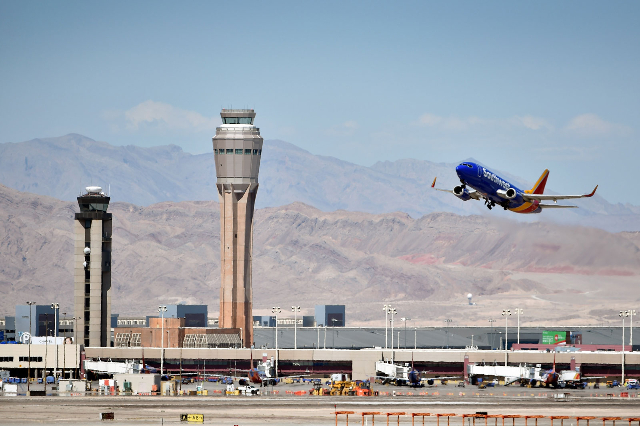McCarran plans to double gates for international carriers
McCarran International Airport will double the number of gates it will have available to international air carriers by early 2017 with a $51 million project that is expected to begin by November.
Rosemary Vassiliadis, director of the Clark County Department of Aviation, told the Southern Nevada Tourism Infrastructure Committee on Thursday about a new tunnel that would connect seven of McCarran's D gates directly to the U.S. Customs and Border Protection passenger arrival facility. McCarran already has seven international gates in the 14-gate Terminal 3 concourse.
The committee, commissioned by Gov. Brian Sandoval, is in the information-gathering stage of a yearlong plan to make recommendations on infrastructure that would benefit the tourism economy. It was the committee's second meeting and it focused on the airport and airlines, cargo carriers and ground transportation companies that serve McCarran.
Once the committee has gathered information, it will make recommendations in a report expected to be completed by July.
Vassiliadis mentioned the tunnel project as an example of what McCarran is doing to address growing capacity issues that could impact the city's ability to accommodate air passengers.
The airport that serves Las Vegas saw 42.9 million passengers last year and is rebounding from the recession that crippled the local tourism economy in 2008. McCarran's highest passenger counts occurred in 2007 when 47.7 million passengers used the airport.
Vassiliadis said McCarran's capacity is about 55 million passengers. When it gets close to that level, local leaders would have to make a $10 billion decision — whether to build a second Las Vegas airport to accommodate the overflow capacity.
Generally, airlines and their customers dislike split operations.
While some analysts have projected that decision wouldn't have to be made for a decade, plans are in the works for a reliever airport in the Ivanpah Valley south of Las Vegas. Land has been acquired near Primm and environmental reviews have been conducted with land being preserved for possible future construction.
In the meantime, Vassiliadis said aviation experts are monitoring the changing industry and the variables that will lead to capacity fluctuations.
Vassiliadis said capacity projections are difficult to predict because of numerous airline and aviation industry changes since the recession.
For example, airlines are focused on generating maximum revenue with precision scheduling and aircraft allocations through capacity management. Airlines often make adjustments in capacity by changing frequencies of flights between cities, using different-sized aircraft on certain routes or changing flight arrival times.
In addition, airlines have differing growth strategies that will increase operations at different paces.
Meanwhile, the Federal Aviation Administration is considering upgrading its air traffic control system with a satellite-based next-generation system, replacing the current World War II-era radar system. If that occurs, air traffic control would be smoother and different routes could be established to increase arrival efficiencies. Vassiliadis warned that a new system could change air traffic patterns in Southern Nevada skies as a result.
The committee also heard from representatives of Allegiant Air and Maverick Tours about airline operations at McCarran and from air cargo carriers UPS and Federal Express.
Committee members also heard about the changing ground transportation dynamic underway at the airport with the approval of ride-hailing companies in the state.
McCarran is in the process of integrating Uber and Lyft into the transportation flow. Representatives of taxi and shuttle services companies are concerned about how additional vehicles from those companies would affect the traffic flow around the airport and in the resort corridor.
Because it's unclear how many vehicles would be operating and when, transportation officials are being forced to take a wait-and-see approach.
Committee members said based on Uber and Lyft service in other cities, they expect their contracted drivers to gravitate to the busiest locations in town, setting the stage for potential gridlock in the resort corridor.
The committee is expected to discuss findings and data about airport matters at its February meeting. At the next session in September, the committee will gather information about stadiums, arenas and other event centers in the valley.
Contact reporter Richard N. Velotta at rvelotta@reviewjournal.com or 702-477-3893. Find @RickVelotta on Twitter.

















